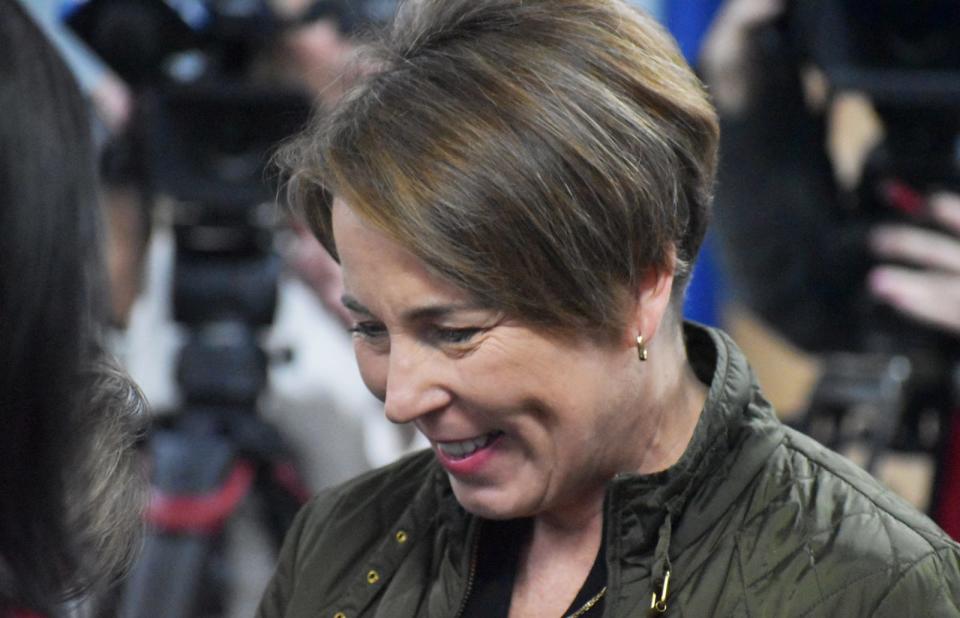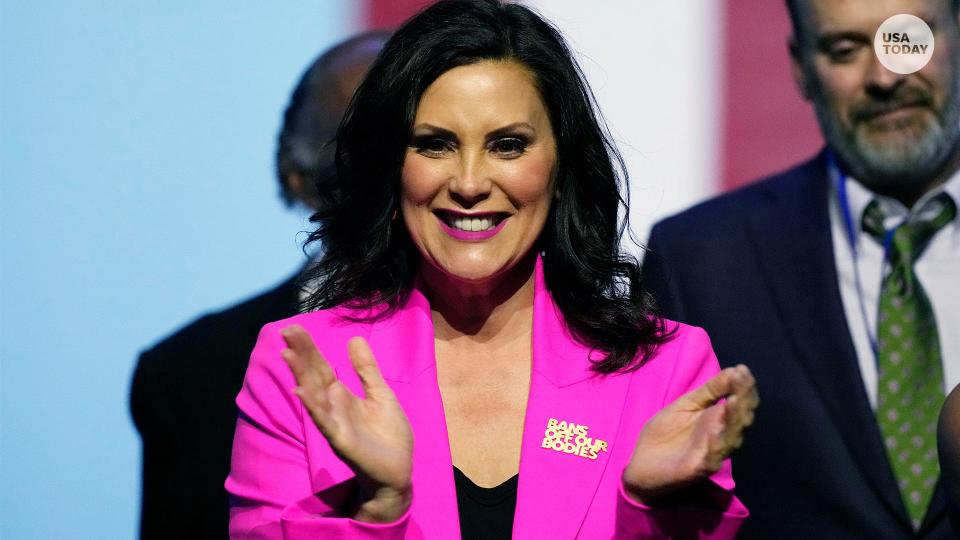Commentary: 7 important things learned about record number of recently elected women to governorships
- Oops!Something went wrong.Please try again later.

Twelve women won a governor’s office in the November 2022 midterm elections. That’s a record, representing more than one-quarter of the 46 women who have ever served as governor since 1974.
Election of women governors sends a message to all Americans that their government is representative of all its people. In addition, research shows that having women governors encourages other women to run for office, increases the connection citizens feel to their government and makes women more likely to pay attention to the actions of their government.
Here are seven things we learned out about the record number of recently elected women to governorships:
1. To win, you have to run:
Women have historically been more hesitant to run than men and often need to be recruited by party leaders to run. A record 91 women candidates ran in primaries for governor in 2022. A record 25 women were major party nominees in the general election. Increased efforts to recruit women candidates likely played a role.
2. Experience matters:
Women candidates were more likely to have held political office than their male counterparts in 2022. In the 12 races in which a woman won, each had significant political experience.
3. Democratic and Republican women approach the decision to run for governor differently:

Political experience increases the chances of success, yet in 2022, Republican women were more willing than Democratic women to run without prior political experience. Over half of Democratic women – 52.5% – running in 2022 had political experience. Only 37.7% of Republican women had political experience.
4. Incumbency matters:

The political science literature has a rich and deep history that documents the difficulty of beating an incumbent. All eight women incumbents who ran, won. In three races, these women incumbents defeated women challengers. And in a year in which a red wave was predicted to unseat Democratic incumbents at all levels of government, Democratic incumbents won, and women Democrats were no different. No Democratic woman incumbent governor lost her race.
5. Open seats provide opportunities for women candidates:
Four women gubernatorial candidates won open seats out of five total open seats. An open seat is one for which no incumbent is running.
6. When women run, they are as successful as men:
More women are running. There has been a notable change since 1978, when there were nine women candidates for governor. In 2022, the number of women candidates increased tenfold from 1978, to 93.
Before 2000, there were never more than four women governors at one time. There are now 12.
7. Governors’ COVID policies differed between men and women:
One study found that women governors were less likely to issue stay-at-home orders during COVID than male governors. At the same time, researchers found that women governors were associated with fewer deaths early in the pandemic. In states where women governors issued early stay-at-home orders, these orders were notably more effective in limiting deaths than in states in which male governors issued early stay-at-home orders.
No longer an exception. In 1974, Ella Grasso, a Connecticut Democrat, was the first woman elected governor without being the wife or widow of a man in politics. Since then, 45 more women have served as governor. Most early women governors were Democrats, while recently Republicans have elected women, too.

The 2022 political experience data tells us that women have entered the mainstream of American politics in both parties. Two state legislatures are majority women – Colorado and Nevada. Almost one-third of state legislators will be women in 2023.
Continued party recruitment and support of women to run in lower-level elected offices is key to increasing the number and diversity of women running for and serving as governor.
William R. Wilkerson is a political science professor at State University of New York at Oneonta; Alana Jeydel is associate professor of political science at Fresno City College
This article originally appeared on Palm Beach Post: Elections: Important things learned about women elected as governors

